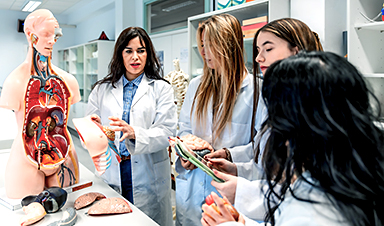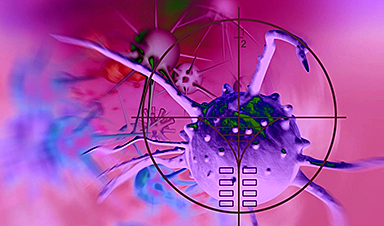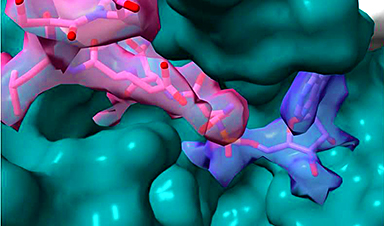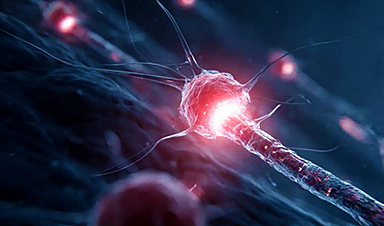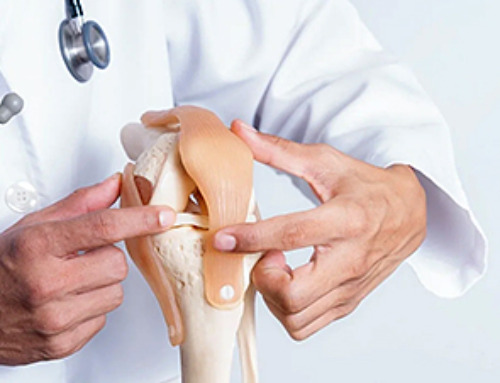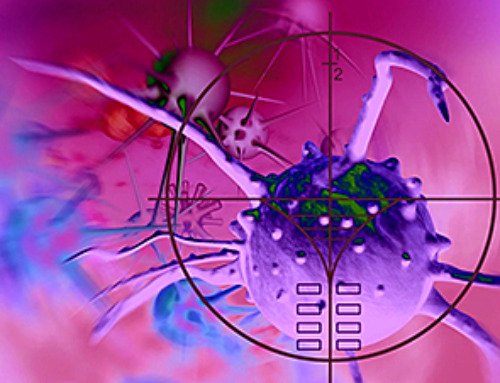| Notwithstanding the wishful thinking of certain irresponsible and incompetent public figures, the only options to control and deal with the spread of the Severe Acute Respiratory Syndrome Virus 2 (SARS-CoV-2) are fast, cheap, reliable, and portable means of diagnosing COVID-19 infection (the name of disease caused by SARS-CoV-2); therapeutics to treat the infected; and vaccines to rapidly build up immunization of large parts of the global population. | |
| In a previous Nanowerk Spotlight we covered nanotechnology-based approaches to testing for COVID-19 infections in high-risk individuals. Today we look at the role of nanotechnology in countering the conventional limitations of antiviral and biological therapeutics. Nanocarriers also have potential to design risk-free and effective immunization strategies for SARS-CoV-2 vaccine candidates such as protein constructs and nucleic acids. | |
| A review paper in ACS Nano (“Nanotechnology for COVID-19: Therapeutics and Vaccine Research”) provides systematic information on nanomedicine strategies employed to deliver small molecules, biologicals (specifically RNAi) and various combination therapies. Some strategies are also proposed for the rational development of this nanomedicine approach and its clinical translation. Since most of the COVID-19 vaccine candidates are sophisticated biological moieties (DNA, mRNA, recombinant proteins, engineered APCs etc.), the scope of nanocarrier delivery becomes highly pertinent. | |
| The authors first describe in great detail the current state of knowledge about the virus’s life cycle, pathophysiology and structure, and then address the organ systems primarily affected by SARS-CoV-2 (it affects the respiratory system first and then spreads systemically to the heart, liver and kidney). | |
Developing SARS-CoV-2 therapeutics |
|
| Today there is no exclusive antiviral treatment against SARS-CoV-2 although therapeutic and prophylactic strategies to deal with existing and potentially upcoming coronavirus infections are under development in research laboratories worldwide. | |
| Using recently available genetic information and protein structure modelling, several therapeutic strategies based on drug repurposing are projected for the immediate treatment of infected patients. | |
| According to the authors, target identification to halt the pathogenesis of the viral infection holds the key in this development: “Viral protease (3CLpro and PLpro), host cell produced protease (TMPRSS2), RNA polymerase (RdRp), interaction site of viral S protein with host receptor ACE2 are among the major targets identified for repurposing already existing antiviral molecules and new small molecules under development.” | |
| Other proposed strategies are targeting the SARS-CoV-2 surface S protein using neutralizing antibody (nAbs) and targeting the SARS-CoV-2 viral RNA genome using RNA interference (RNAi) or antisense oligonucleotides. | |
Developing a vaccine against COVID-19 |
|
| Massive efforts are being employed across the world to develop safe and effective vaccines and several vaccine candidates (see Table 1 in the review for details) have already made it to human clinical trials as a result of fast-tracked development strategies and advanced vaccine technological platforms (read more here in The New England Journal of Medicine: “Developing Covid-19 Vaccines at Pandemic Speed”). | |
| Similar to what researchers are doing in developing SARS-CoV-2 therapeutics, the target strategy for most of the vaccine candidates is to induce nAbs against the viral S protein, averting the ACE2 mediated host uptake. | |
| In the case of SARS-CoV vaccine development, higher nAbs titers and better protection was reported with S protein subunit vaccines when compared to any other target strategy. SARS/MERS vaccine development research suggests S protein subunits, RBD of the S1 subunit and S protein/gene as the most preferred target sites. | |
| The development of COVID-19 vaccine candidates are relying on several high-tech platforms including attenuated and inactivated viruses, replicating and non replicating viral vectors, DNA and mRNA, virus-like particles and recombinant protein-based approaches. |
Image Credit: Envato/ Amanda Scott
![]()
News This Week
Repurposed drugs could calm the immune system’s response to nanomedicine
An international study led by researchers at the University of Colorado Anschutz Medical Campus has identified a promising strategy to enhance the safety of nanomedicines, advanced therapies often used in cancer and vaccine treatments, [...]
Nano-Enhanced Hydrogel Strategies for Cartilage Repair
A recent article in Engineering describes the development of a protein-based nanocomposite hydrogel designed to deliver two therapeutic agents—dexamethasone (Dex) and kartogenin (KGN)—to support cartilage repair. The hydrogel is engineered to modulate immune responses and promote [...]
New Cancer Drug Blocks Tumors Without Debilitating Side Effects
A new drug targets RAS-PI3Kα pathways without harmful side effects. It was developed using high-performance computing and AI. A new cancer drug candidate, developed through a collaboration between Lawrence Livermore National Laboratory (LLNL), BridgeBio Oncology [...]
Scientists Are Pretty Close to Replicating the First Thing That Ever Lived
For 400 million years, a leading hypothesis claims, Earth was an “RNA World,” meaning that life must’ve first replicated from RNA before the arrival of proteins and DNA. Unfortunately, scientists have failed to find [...]
Why ‘Peniaphobia’ Is Exploding Among Young People (And Why We Should Be Concerned)
An insidious illness is taking hold among a growing proportion of young people. Little known to the general public, peniaphobia—the fear of becoming poor—is gaining ground among teens and young adults. Discover the causes [...]
Team finds flawed data in recent study relevant to coronavirus antiviral development
The COVID pandemic illustrated how urgently we need antiviral medications capable of treating coronavirus infections. To aid this effort, researchers quickly homed in on part of SARS-CoV-2's molecular structure known as the NiRAN domain—an [...]
Drug-Coated Neural Implants Reduce Immune Rejection
Summary: A new study shows that coating neural prosthetic implants with the anti-inflammatory drug dexamethasone helps reduce the body’s immune response and scar tissue formation. This strategy enhances the long-term performance and stability of electrodes [...]
Scientists discover cancer-fighting bacteria that ‘soak up’ forever chemicals in the body
A family of healthy bacteria may help 'soak up' toxic forever chemicals in the body, warding off their cancerous effects. Forever chemicals, also known as PFAS (per- and polyfluoroalkyl substances), are toxic chemicals that [...]
Johns Hopkins Researchers Uncover a New Way To Kill Cancer Cells
A new study reveals that blocking ribosomal RNA production rewires cancer cell behavior and could help treat genetically unstable tumors. Researchers at the Johns Hopkins Kimmel Cancer Center and the Department of Radiation Oncology and Molecular [...]
AI matches doctors in mapping lung tumors for radiation therapy
In radiation therapy, precision can save lives. Oncologists must carefully map the size and location of a tumor before delivering high-dose radiation to destroy cancer cells while sparing healthy tissue. But this process, called [...]
Scientists Finally “See” Key Protein That Controls Inflammation
Researchers used advanced microscopy to uncover important protein structures. For the first time, two important protein structures in the human body are being visualized, thanks in part to cutting-edge technology at the University of [...]
AI tool detects 9 types of dementia from a single brain scan
Mayo Clinic researchers have developed a new artificial intelligence (AI) tool that helps clinicians identify brain activity patterns linked to nine types of dementia, including Alzheimer's disease, using a single, widely available scan—a transformative [...]
Is plastic packaging putting more than just food on your plate?
New research reveals that common food packaging and utensils can shed microscopic plastics into our food, prompting urgent calls for stricter testing and updated regulations to protect public health. Beyond microplastics: The analysis intentionally [...]
Aging Spreads Through the Bloodstream
Summary: New research reveals that aging isn’t just a local cellular process—it can spread throughout the body via the bloodstream. A redox-sensitive protein called ReHMGB1, secreted by senescent cells, was found to trigger aging features [...]
AI and nanomedicine find rare biomarkers for prostrate cancer and atherosclerosis
Imagine a stadium packed with 75,000 fans, all wearing green and white jerseys—except one person in a solid green shirt. Finding that person would be tough. That's how hard it is for scientists to [...]
Are Pesticides Breeding the Next Pandemic? Experts Warn of Fungal Superbugs
Fungicides used in agriculture have been linked to an increase in resistance to antifungal drugs in both humans and animals. Fungal infections are on the rise, and two UC Davis infectious disease experts, Dr. George Thompson [...]

